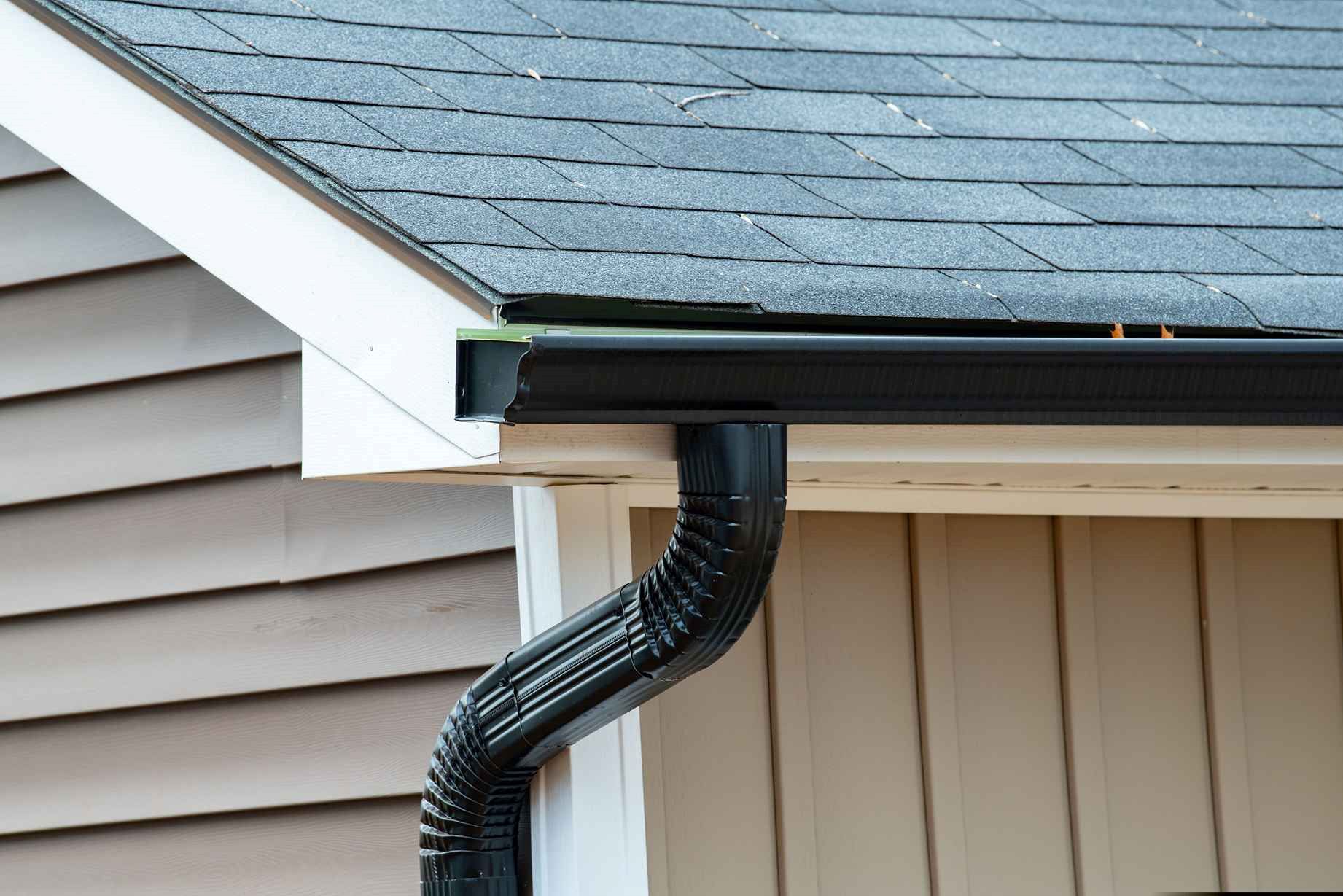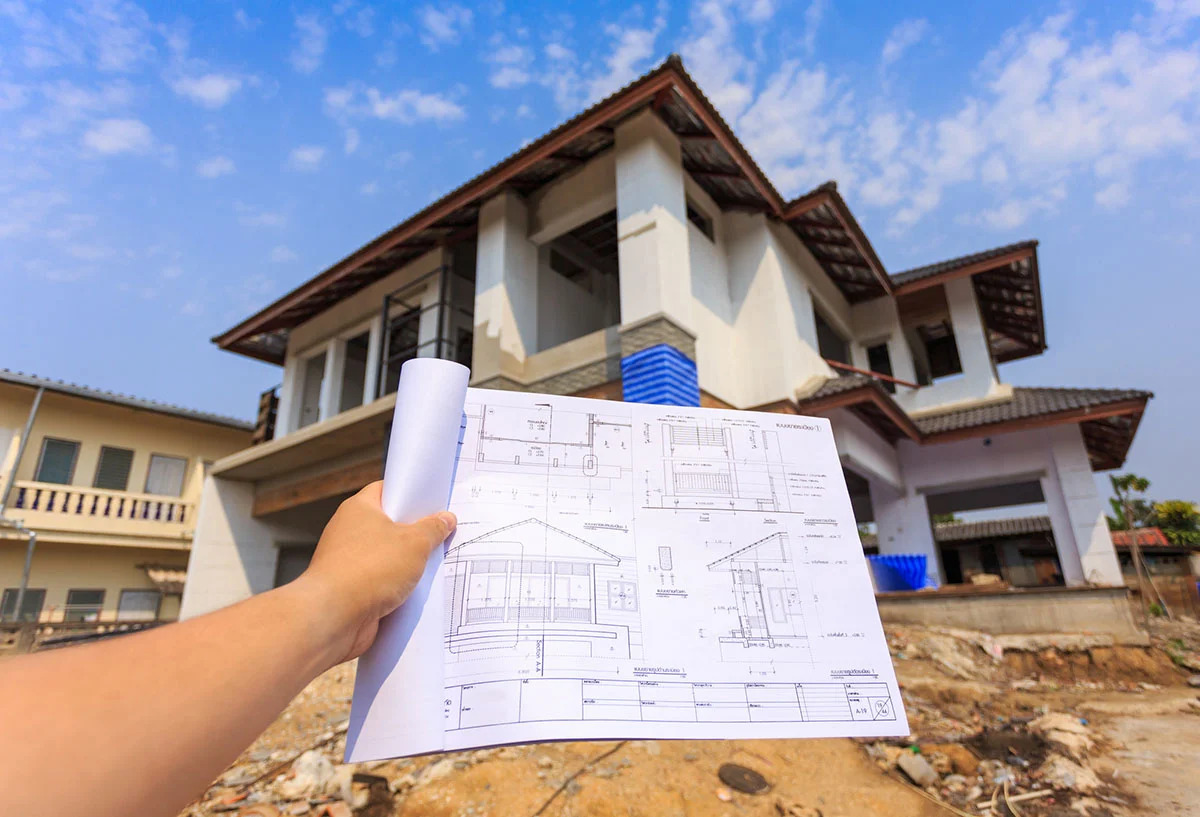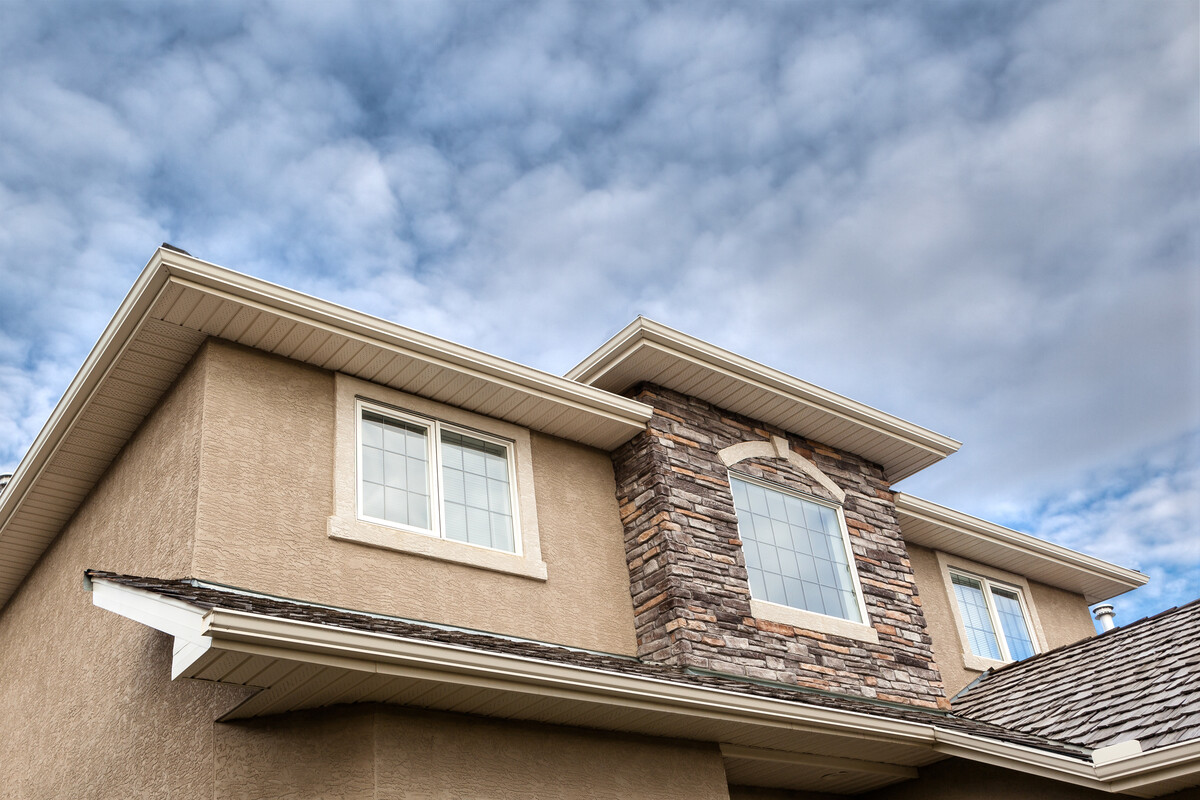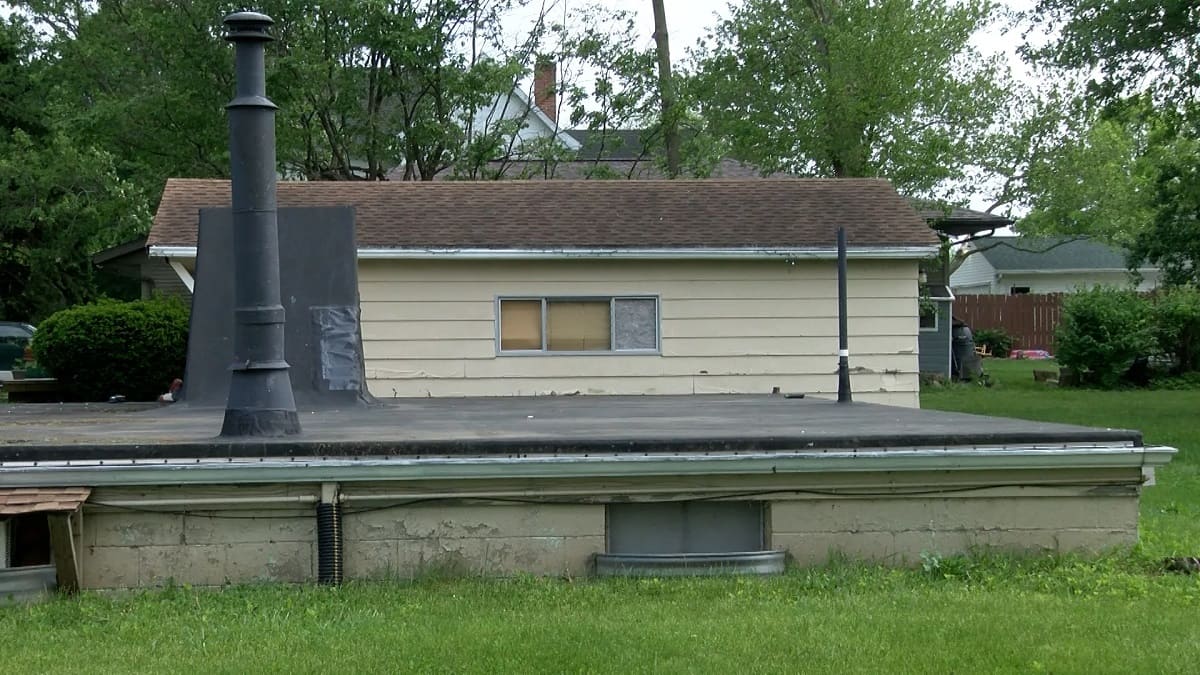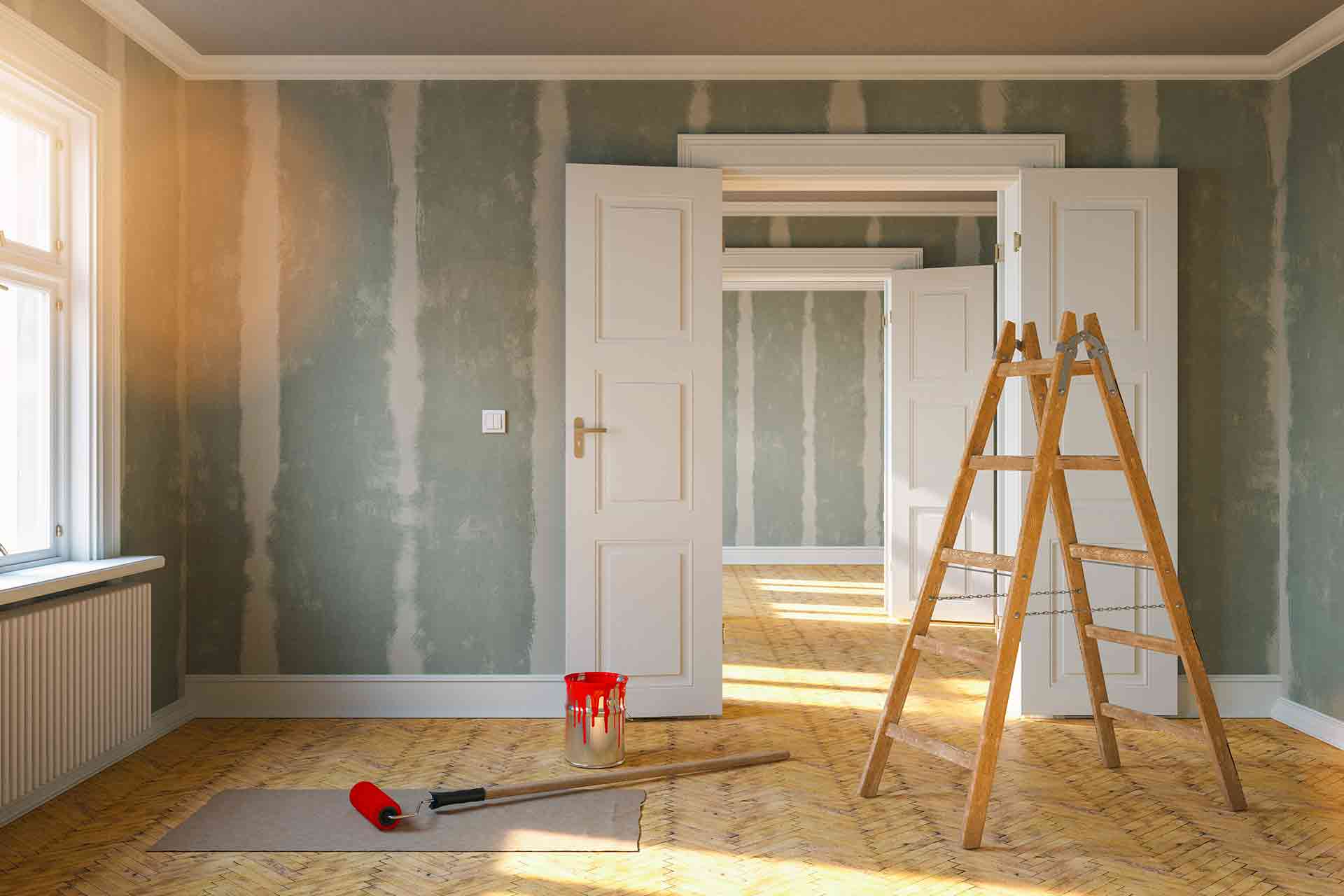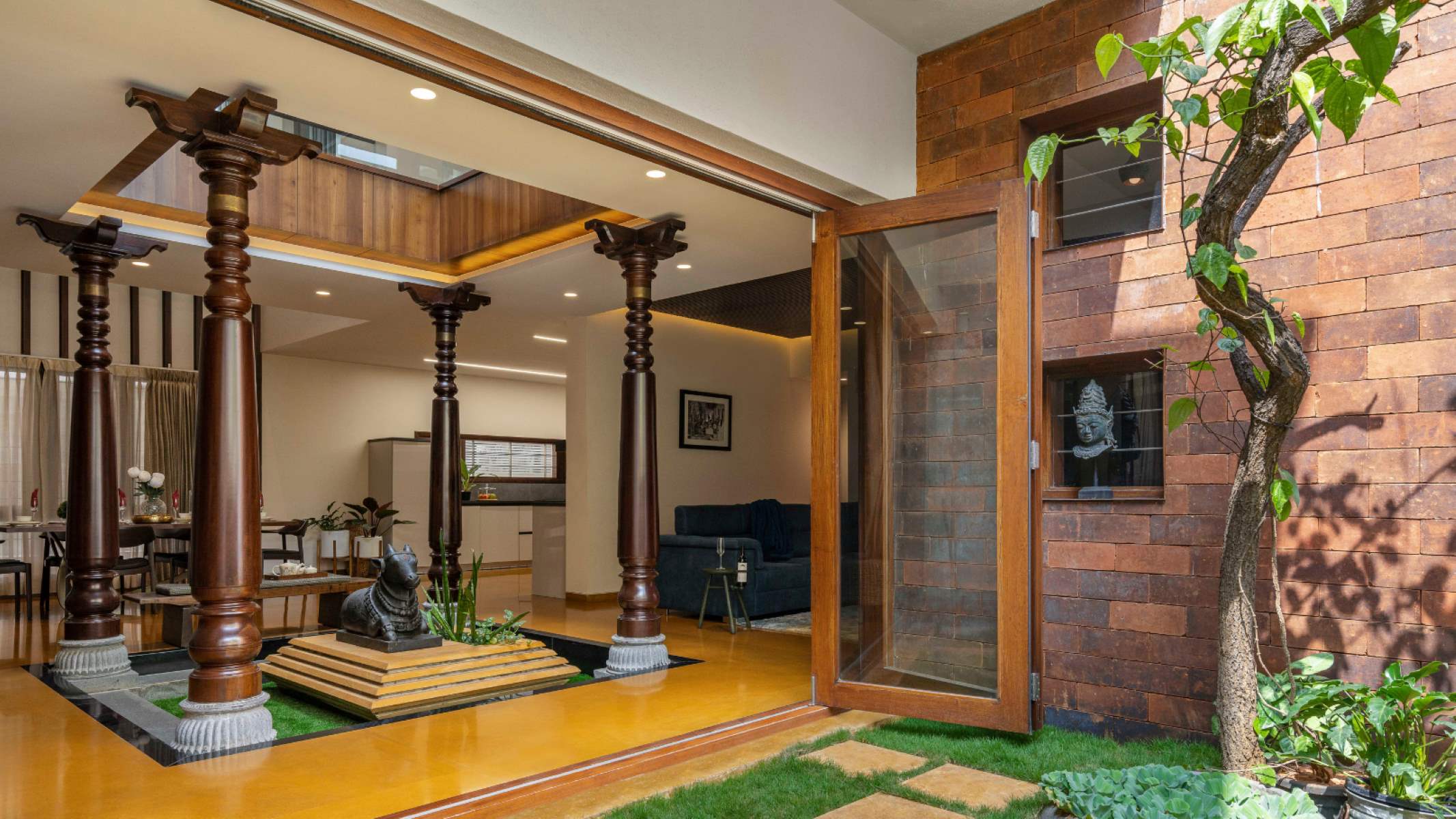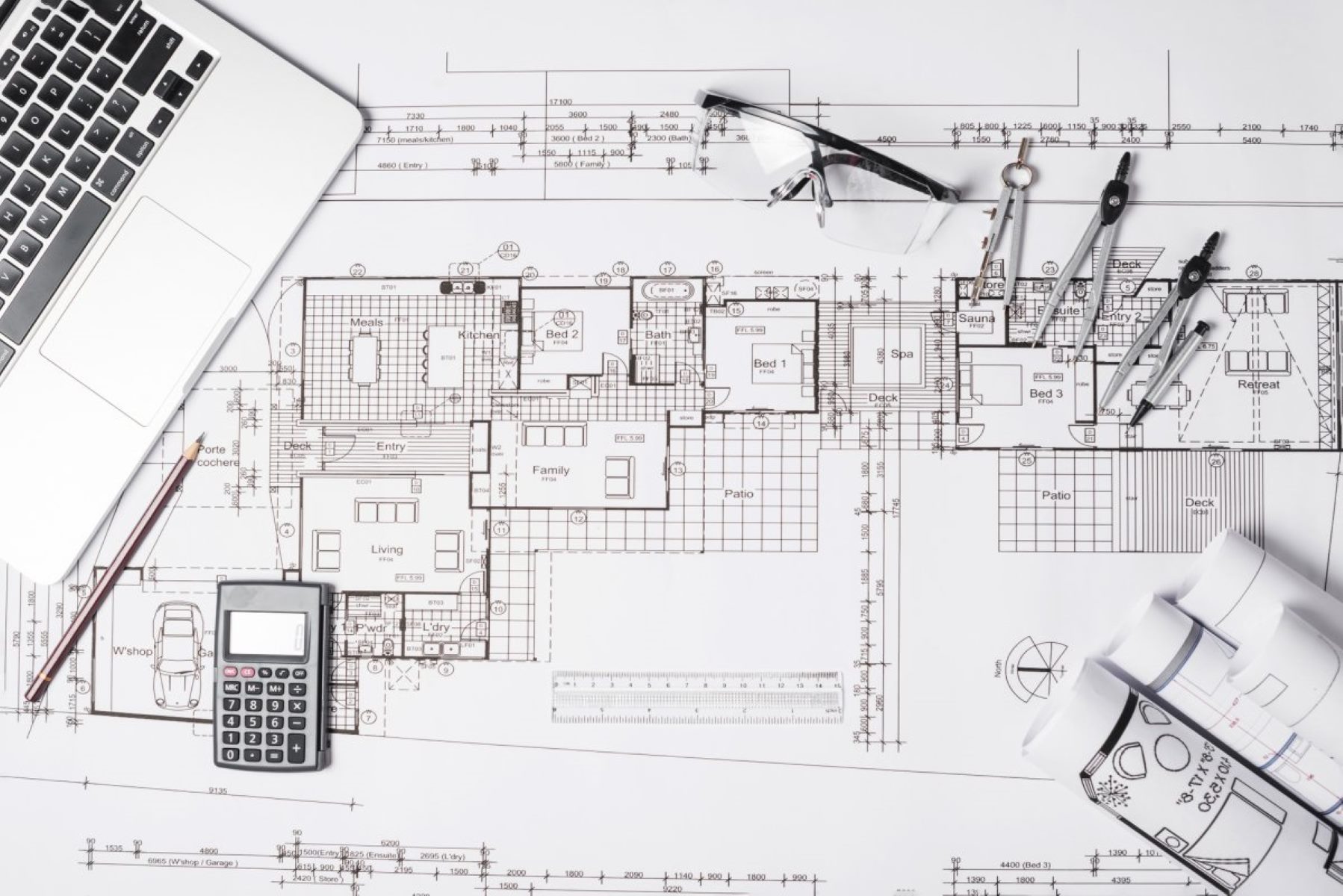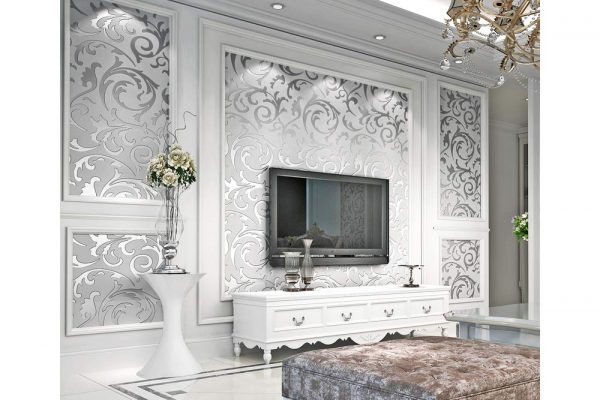Home>diy>Architecture & Design>What Is A “Design House”
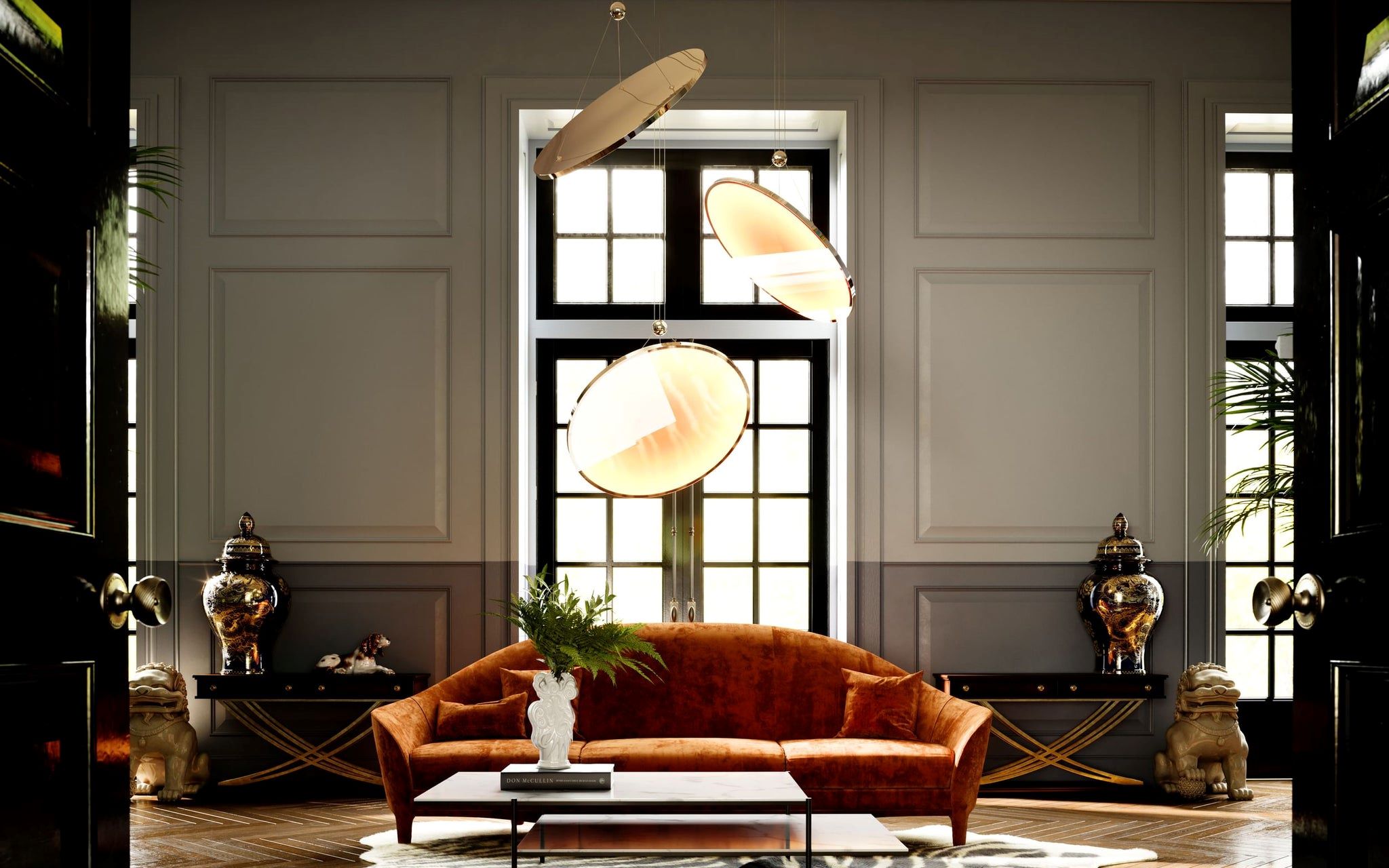

Architecture & Design
What Is A “Design House”
Modified: March 19, 2024
Discover the world of design house and explore the intricate details of architecture design. Unleash your creative potential and witness the power of innovative design solutions.
(Many of the links in this article redirect to a specific reviewed product. Your purchase of these products through affiliate links helps to generate commission for Storables.com, at no extra cost. Learn more)
Introduction
Design House, a term widely used in the creative industry, refers to a company or agency that specializes in providing comprehensive architectural and interior design services. These firms possess a deep understanding of design principles, construction techniques, and space utilization, enabling them to create functional and visually appealing structures.
A design house plays a vital role in shaping the built environment, whether it’s designing residential properties, commercial spaces, or public infrastructure. By combining artistic vision with technical expertise, these firms transform concepts and ideas into tangible spaces that meet the needs and aspirations of their clients.
Design houses have become increasingly in demand as the architectural and interior design industries continue to flourish. With the rapid growth of urbanization and the growing focus on sustainability, there is a heightened emphasis on creating innovative, efficient, and aesthetically pleasing spaces.
Throughout this article, we will delve deeper into the concept of design houses, exploring their history, the services they provide, their importance in the industry, and the factors to consider when choosing one.
Key Takeaways:
- Design houses are specialized firms offering comprehensive architectural and interior design services, combining artistic vision with technical expertise to create functional and visually appealing spaces.
- The history, services, and success stories of design houses highlight their crucial role in shaping the built environment, while emerging trends showcase their ability to deliver innovative and impactful designs.
Read more: What Is Porch In House
Definition of Design House
A design house is a specialized firm or agency that offers a wide range of architectural and interior design services. These companies are staffed with experienced professionals, including architects, interior designers, engineers, and project managers, who collaborate to create innovative and functional spaces.
Design houses work closely with clients, understanding their requirements, objectives, and vision for the project. They leverage their expertise and creative skills to develop design concepts that are both aesthetically pleasing and practical.
At the core of design house services is the ability to harmonize form and function. They go beyond visual aesthetics to consider factors such as ergonomics, sustainability, and user experience. Whether it’s designing a residential home, an office space, a retail store, or a public building, design houses have the expertise to create unique and customized solutions.
Design houses follow a systematic process that involves understanding the project brief, conducting research, developing design concepts, creating detailed drawings and specifications, coordinating with contractors and vendors, and overseeing project implementation. They handle every aspect of the design process, from initial planning to final execution.
In addition to architectural design, design houses often offer interior design services. This includes selecting color palettes, materials, furniture, lighting, and other elements that contribute to the overall ambiance and functionality of the space. They work closely with clients to create spaces that reflect their personality and style, while also adhering to industry standards and best practices.
Overall, design houses serve as a one-stop solution for all design-related needs. They bring together a diverse set of skills and knowledge to provide comprehensive design services, ensuring that every project they undertake is visually stunning, functional, and in line with the client’s objectives.
History of Design House
The concept of design houses can be traced back to ancient civilizations, where skilled artisans and architects worked together to create remarkable structures. Throughout history, various architectural and design movements have shaped the evolution of design houses, leading to the diverse and innovative industry we see today.
During the Renaissance period in Europe, the role of the architect and designer started to gain prominence. Artists such as Leonardo da Vinci and Michelangelo not only excelled in painting and sculpture but also contributed significantly to architectural design. Their multidisciplinary approach laid the foundation for the integration of art and architecture.
In the 19th century, the Industrial Revolution brought about significant advancements in construction materials and techniques. This led to the establishment of design firms that specialized in architectural and interior design services. The emergence of design houses coincided with the booming construction industry and the increased demand for skilled professionals.
Throughout the 20th century, design houses became instrumental in shaping architectural and interior design movements. The rise of modernism in the early 1900s, with its focus on simplicity, functionality, and form-follows-function, influenced design houses to adopt a more minimalist and functional approach.
In the mid-20th century, design houses played a crucial role in the development of the International Style, characterized by clean lines, open spaces, and the use of glass and steel. Prominent design houses, such as Bauhaus and Le Corbusier’s studio, spearheaded this movement, leaving a lasting impact on the design industry.
In recent decades, design houses have adapted to the changing needs and trends of the industry. With the increasing importance of sustainability and green design practices, many design houses have integrated eco-friendly and energy-efficient design principles into their work.
The advent of digital technology has also influenced the evolution of design houses. With advanced design software and 3D modeling tools, design houses can now create virtual representations of their designs, enabling clients to visualize the end result before construction begins.
Today, design houses continue to push the boundaries of design, incorporating innovative materials, technologies, and design philosophies. They play a vital role in shaping the built environment, creating spaces that enhance human experiences and contribute to the cultural fabric of communities.
Services Offered by Design House
Design houses provide a comprehensive range of services that cater to both architectural and interior design needs. Their diverse skill set allows them to offer an array of services aimed at creating functional, aesthetically pleasing, and sustainable spaces. Here are some of the key services provided by design houses:
- Architectural Design: Design houses excel in architectural design, creating innovative and practical structures. They develop design concepts, prepare detailed drawings, and oversee the entire architectural process from initial planning to final execution.
- Interior Design: Design houses bring creativity and functionality to interior spaces. They specialize in selecting materials, colors, furniture, and lighting to create harmonious and visually appealing interiors.
- Space Planning: Design houses analyze space requirements and develop efficient floor plans that maximize usability and functionality. They take into account factors such as traffic flow, furniture placement, and spatial relationships.
- 3D Visualization: Design houses utilize advanced 3D modeling software to create realistic visualizations of architectural and interior designs. This allows clients to envision the final outcome and make informed decisions.
- Sustainable Design: Many design houses incorporate sustainable design practices, promoting energy efficiency, the use of renewable materials, and environmentally friendly construction methods.
- Project Management: Design houses often provide project management services, ensuring that the design vision is effectively executed. They coordinate with contractors, vendors, and other stakeholders to ensure timely completion and adherence to quality standards.
- Renovation and Remodeling: Design houses offer expertise in renovating and remodeling existing structures, breathing new life into spaces. They enhance functionality, update aesthetics, and optimize space utilization.
- Custom Furniture Design: Some design houses have in-house furniture designers who create custom pieces tailored to the client’s unique needs and style.
- Consultation and Advisory Services: Design houses provide professional advice and consultation to clients throughout the design process. They offer insights, recommendations, and solutions to ensure the success of the project.
These are just a few examples of the services offered by design houses. Each project is unique, and design houses tailor their services to meet specific client requirements, creating tailored and personalized design solutions.
Importance of Design House
Design houses play a crucial role in the architecture and interior design industry, and their importance cannot be understated. Here are some key reasons why design houses are essential:
Expertise and Skill: Design houses bring a wealth of expertise and skill to the table. With their knowledge of design principles, construction techniques, and industry standards, they have the ability to transform ideas into well-designed and functional spaces. Their experience and creative flair allow them to tackle complex design challenges and create innovative solutions.
Creating Functional Spaces: Design houses prioritize the functionality of spaces. They carefully analyze the needs and requirements of clients and translate them into practical and efficient designs. By considering factors such as space planning, traffic flow, and ergonomics, design houses ensure that the spaces they create are optimized for their intended use.
Aesthetic Appeal: Aesthetics are a significant aspect of design, and design houses excel at creating visually appealing spaces. Through their understanding of color theory, materials, and spatial relationships, they can transform ordinary spaces into captivating environments. Whether it’s selecting the right color palette, incorporating texture, or harmonizing elements, design houses have the expertise to create visually stunning and memorable designs.
Enhancing User Experience: Design houses prioritize the experience of the end-user. They strive to create spaces that are comfortable, intuitive, and enjoyable to inhabit. By considering user needs and behaviors, they can design spaces that promote well-being and productivity. From ergonomic furniture to optimal lighting, every design element is carefully chosen to enhance the user experience.
Efficiency and Sustainability: Design houses are at the forefront of sustainable design practices. With a growing emphasis on environmental responsibility, design houses incorporate energy-efficient systems, sustainable materials, and eco-friendly construction techniques. By prioritizing sustainability, they contribute to a greener and more sustainable built environment.
Collaboration and Coordination: Design houses excel at collaborating with clients, contractors, and other stakeholders involved in the project. They act as a central hub, ensuring effective communication and coordination between different parties. This ensures that the project progresses smoothly and that all aspects of the design are executed to the highest standards.
Value for Investment: Engaging a design house is a solid investment in the long-term value of a project. Their expertise and attention to detail result in well-designed and well-executed spaces that stand the test of time. A thoughtfully designed space not only enhances the quality of life for its occupants but also has the potential to increase the property’s value.
In summary, design houses bring a wealth of knowledge, creativity, and expertise to the table. They play a central role in creating functional, aesthetically pleasing, and sustainable spaces that meet the unique needs and aspirations of their clients.
Design house refers to a company or studio that specializes in creating and producing designs for various products, such as furniture, home decor, fashion, and more. They often have a team of designers and artisans who work together to bring unique and innovative designs to the market.
Read more: How To Connect A Porch Roof To House
Success Stories of Design House
Throughout the years, design houses have been responsible for numerous successful projects that have garnered praise and recognition. These success stories showcase the immense talent and creativity of design houses in creating spaces that inspire and captivate. Here are a few notable examples:
The Guggenheim Museum, Bilbao: Designed by architect Frank Gehry, the Guggenheim Museum in Bilbao, Spain, is a true testament to the power of innovative design. The design house behind this iconic building brilliantly combined curving, organic forms with titanium cladding, creating a structure that has become an architectural landmark and a symbol of urban regeneration. The museum’s success lies in its ability to seamlessly blend into its surroundings while standing out as a work of art in itself.
The Burj Khalifa, Dubai: The Burj Khalifa, the tallest skyscraper in the world, is a testament to the engineering and design prowess of the design house responsible for its creation. The extravagant and sleek design of this iconic structure redefines modern architecture. Its stunning facade and innovative structural systems have set new standards for skyscraper design, making it a global symbol of luxury and elegance.
The High Line, New York City: The High Line, an elevated park in New York City, showcases the transformative power of design houses in revitalizing urban spaces. What was once an abandoned railway track is now a beautifully landscaped park that serves as a recreational oasis in the heart of Manhattan. The design house behind this project seamlessly integrated nature, art installations, and public spaces, creating a unique and beloved urban park that has become a model for urban redesign initiatives worldwide.
The Apple Store, Fifth Avenue: The design house responsible for the Apple Store on Fifth Avenue in New York City created an unforgettable retail experience that revolutionized the concept of a store. With its iconic glass cube entrance and minimalist interior, the design house successfully captured the essence of the Apple brand. This architectural masterpiece has become a global landmark and sets the standard for innovative retail design and customer experience.
Vitra Design Museum, Germany: The Vitra Design Museum in Weil am Rhein, Germany, stands as a testament to the power of design houses in creating immersive cultural spaces. The design house behind this project created a harmonious blend of art, design, and architecture. The museum’s unique design incorporates a combination of iconic architecture, exhibition spaces, and stunning outdoor landscapes. It has become a pilgrimage site for design enthusiasts from around the world, showcasing the impact of design on culture and society.
These success stories highlight the transformative impact of design houses in creating spaces that push boundaries, inspire innovation, and leave a lasting legacy. They serve as a testament to the remarkable talent and creativity of design houses in shaping the built environment and enriching the lives of people who experience these spaces.
Factors to Consider when Choosing a Design House
Choosing the right design house for your architectural or interior design project is a crucial decision that can greatly impact the outcome of your project. With so many design houses available, it’s important to consider several factors to ensure that you find the right fit. Here are some key factors to consider when choosing a design house:
Experience and Expertise: A design house with a proven track record of successfully completed projects and years of experience is likely to bring a high level of expertise to your project. Look for design houses that specialize in the specific type of project you have in mind, whether it’s residential, commercial, or public spaces.
Portfolio and Style: Review the design house’s portfolio to get a sense of their design style and aesthetics. Look for projects that align with your vision and preferences. A design house that has experience in creating designs that you find appealing is more likely to deliver a finished product that meets your expectations.
Professionalism and Communication: Effective communication and professionalism are key factors in a successful relationship with a design house. Look for a design house that values open communication, listens to your needs, and responds promptly to your queries. Clear and transparent communication is essential throughout the design process.
Client References and Testimonials: Reach out to past clients or look for testimonials on the design house’s website to gain insights into their working style and client satisfaction. This will give you a better understanding of what it’s like to work with them and help you make an informed decision.
Collaboration and Team Dynamics: Consider how the design house collaborates with other professionals involved in your project, such as contractors and engineers. A design house that fosters strong working relationships and collaboration will ensure a smoother and more efficient execution of your project.
Technology and Innovation: Inquire about the design house’s use of technology and innovation in their design processes. A design house that embraces advanced tools and software can offer more accurate visualizations, greater precision in design details, and seamless project coordination.
Project Management Approach: Understand how the design house manages projects from start to finish. Ask about their project management approach, timelines, and their ability to handle construction oversight and coordination. An organized and well-structured project management approach will contribute to a smooth and successful project completion.
Budget and Cost Transparency: Discuss the budget and cost expectations with the design house from the beginning. Look for a design house that provides clear and transparent pricing and is willing to work within your budget constraints without compromising on quality.
Compatibility and Trust: Finally, trust your instincts and consider the overall compatibility with the design house. Building a strong working relationship based on trust, mutual understanding, and shared goals is essential for a successful collaboration.
By carefully considering these factors, you will be better equipped to choose a design house that aligns with your vision, meets your requirements, and ultimately delivers a successful and satisfying design project.
Emerging Trends in the Design House Industry
The design house industry is constantly evolving, influenced by advancements in technology, changing societal needs, and shifting design preferences. Staying up to date with the latest trends is crucial for design houses to remain competitive and provide innovative solutions to their clients. Here are some emerging trends shaping the design house industry:
Sustainable Design: There is a growing emphasis on sustainability and environmentally friendly design practices. Design houses are incorporating sustainable materials, energy-efficient systems, and eco-friendly construction methods into their projects. The focus is on creating spaces that have a minimal environmental impact and promote a more sustainable future.
Biophilic Design: Biophilic design integrates nature and natural elements into built environments. Design houses are incorporating features such as living green walls, natural lighting, and indoor plants to create spaces that promote well-being and connect people to nature. Biophilic design has been shown to improve productivity, reduce stress, and enhance overall happiness.
Smart Home Integration: With the rise of smart home technology, design houses are integrating smart features into their designs. From automated lighting and climate control to voice-activated systems and remote-controlled security, design houses are creating homes that are technologically advanced and offer convenience and connectivity.
Flexible and Multifunctional Spaces: Design houses are embracing the concept of flexible and multifunctional spaces. With the changing needs of users and the rise of remote work, spaces that can adapt to different functions are in high demand. This trend is redefining traditional room layouts and encouraging creative and adaptable design solutions.
Wellness-Oriented Design: Design houses are increasingly focusing on creating spaces that promote physical and mental well-being. From incorporating natural light and ventilation to designing spaces that support movement and relaxation, the emphasis is on creating environments that enhance the overall health and wellness of occupants.
Artificial Intelligence and Virtual Reality: Design houses are utilizing artificial intelligence and virtual reality (VR) technologies to enhance the design process. AI algorithms can analyze large datasets and provide insights into design solutions, while VR allows clients to experience and interact with virtual designs before construction begins, improving visualization and decision-making.
Inclusive Design: Design houses are recognizing the importance of inclusivity in design. They are incorporating universal design principles that ensure spaces are accessible to people of all ages, abilities, and backgrounds. This includes features such as wheelchair accessibility, ergonomic design, and sensory considerations.
Community Engagement and Social Impact: Design houses are becoming more involved in community engagement and social impact initiatives. They are collaborating with local communities to create spaces that address social, cultural, and environmental needs. This trend fosters a sense of belonging and promotes sustainable development within communities.
These emerging trends demonstrate the dynamic nature of the design house industry. By embracing these trends, design houses can deliver innovative and impactful designs that meet the evolving needs of clients and contribute to a better and more sustainable future.
Conclusion
Design houses have a crucial role to play in shaping the built environment. Through their expertise in architecture and interior design, they create functional, aesthetically pleasing, and innovative spaces that enhance the lives of people who inhabit them. From residential homes to commercial buildings and public infrastructure, design houses have the ability to transform ideas into reality.
In this article, we explored the definition of design houses and how they have evolved throughout history. We discussed the wide range of services that design houses offer, including architectural design, interior design, space planning, and project management. We also highlighted the importance of design houses in creating spaces that are both visually appealing and functional.
We delved into success stories of famous design house projects that have left a lasting impact on the architectural landscape. These examples demonstrated the transformative power of design houses in creating iconic spaces that inspire and captivate.
Choosing the right design house is crucial, and we provided factors to consider in the selection process. From experience and expertise to collaboration and professionalism, these factors help ensure a successful partnership and a satisfying design outcome.
Finally, we explored emerging trends in the design house industry. From sustainability and biophilic design to smart home integration and inclusive design, these trends are shaping the future of design and encouraging innovative solutions that meet the evolving needs of clients and users.
In conclusion, design houses are essential in creating spaces that enrich the lives of people and contribute to the development of sustainable and livable environments. The combination of creativity, technical expertise, and a deep understanding of clients’ needs positions design houses as key players in the architecture and interior design industry. As the industry continues to evolve, design houses will undoubtedly continue to play a vital role in shaping the way we live, work, and engage with our environment.
Frequently Asked Questions about What Is A "Design House"
Was this page helpful?
At Storables.com, we guarantee accurate and reliable information. Our content, validated by Expert Board Contributors, is crafted following stringent Editorial Policies. We're committed to providing you with well-researched, expert-backed insights for all your informational needs.




